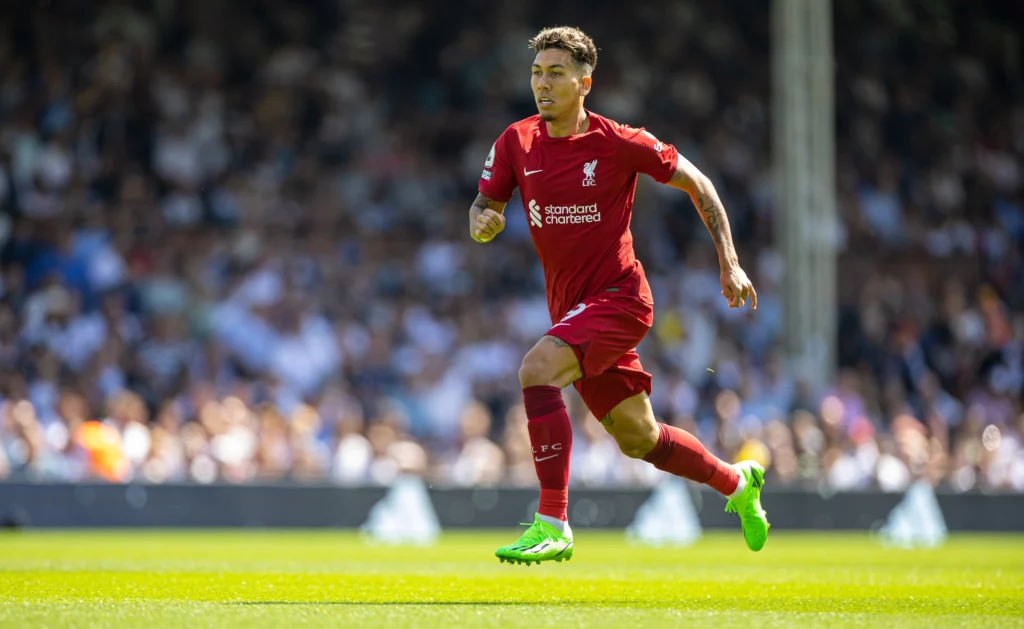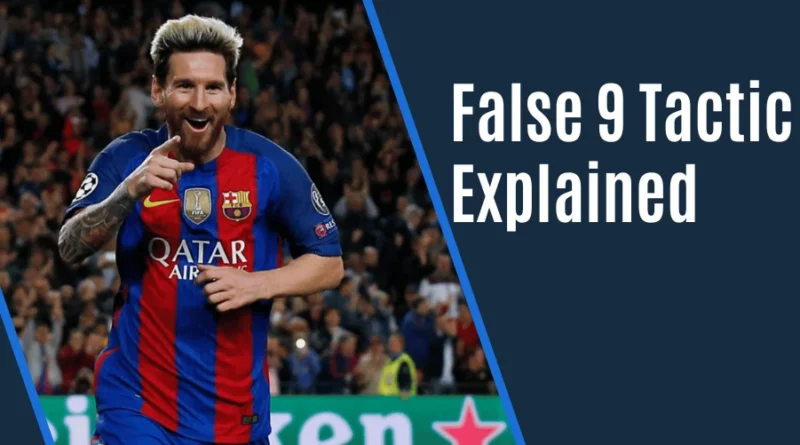What Is a False 9 in Football
Ever heard the term “false 9” thrown around in football discussions and wondered what all the fuss is about? Well, you’re not alone! This tactical approach has become a fascinating part of the beautiful game, adding layers of complexity and intrigue to how teams attack. Let’s dive in and break down what exactly a False 9 is, without getting bogged down in too much technical stuff.
Imagine your typical center-forward, the number 9, usually the guy leading the attack, right? Now, picture that player doing something a little unexpected – instead of just lurking around the opposition’s penalty area, they start dropping deeper into midfield. That, in a nutshell, is the essence of a False 9. Think of it as a clever twist on the traditional striker role, a hybrid where the forward becomes a bit of a playmaker too, linking up the midfield and attack.
So, why the quirky name? Well, traditionally, the number 9 shirt was reserved for the main striker. A “false 9” is essentially a player who wears that number, starts in that central attacking position, but plays in a way that’s not what you’d typically expect from a number 9 – hence, “false”. This movement creates a real head-scratcher for the opposition’s central defenders. They’re suddenly faced with a dilemma: do they follow this striker who’s venturing into midfield, potentially leaving acres of space behind them for other attackers to exploit? Or do they hold their ground and risk allowing the false 9 to pick up the ball and cause trouble without any pressure? This tactical uncertainty is a key weapon in the false 9’s arsenal, often disrupting the defensive shape and creating opportunities.
Now, let’s compare this to the classic center-forward. A traditional number 9 is usually positioned right at the top of the formation, acting as the main focal point for attacks. Their primary job is to get on the end of crosses, through balls, and generally be in the right place at the right time to score goals. They often rely on physical attributes like strength and height to hold up the ball and compete aerially. The False 9, in contrast, while still needing to be a goal threat, prioritizes dropping deep to become involved in the build-up play, creating overloads in midfield, and unlocking defenses with clever passes and movement for teammates. This requires a different skillset, one that emphasizes technical ability, a wide range of passing, excellent vision, and intelligent movement off the ball.
Some of the Best False 9 Players
Over the years, we have witnessed some incredible false 9s in football. Players who have mastered the art and left their mark on the game with their unique interpretations of the role. A few notable players are as follows
Lionel Messi

Perhaps the most iconic example is Lionel Messi during his reign under Pep Guardiola at Barcelona. His ability to drop into midfield, weave past defenders with his incredible dribbling skills, and then either create a killer pass or unleash a shot himself was simply revolutionary. Messi’s success in this role not only brought Barcelona a mountain of trophies but also popularized the false 9 tactic in modern football.
Roberto Firmino

Another master of the false 9 is Roberto Firmino, who was instrumental in Jurgen Klopp’s Liverpool side that conquered Europe and England. Firmino’s exceptional work rate, pressing from the front, and ability to link play seamlessly with the likes of Mohamed Salah and Sadio Mané made him a perfect fit for the role. His unselfishness and intelligent movement often created space for his fellow attackers to thrive.
Francesco Totti

Let’s not forget the legendary Francesco Totti of Roma. Under Luciano Spalletti, Totti was successfully deployed as a False 9, utilizing his incredible creativity, vision, and goal-scoring prowess from a deeper position. His adaptability highlighted how attacking midfielders with strong technical foundations can excel in this role.
Other Notable False 9s
The list of notable false 9s goes on, including the likes of Karim Benzema, who often dropped deep for Real Madrid to link play. Harry Kane, who has incorporated elements of the false 9 into his game for Tottenham and England. Cesc Fàbregas, who famously played the role for Spain during their Euro 2012 triumph. Kevin De Bruyne, who has occasionally filled the role for Manchester City under Guardiola, and even going back further to pioneers like Matthias Sindelar of Austria in the 1930s and Nándor Hidegkuti of Hungary in the 1950s. This rich history shows that the idea of a center-forward dropping deep to influence the game is not just a modern fad.
Also Read: Tiki Taka in Football | Explained
Pros and Cons of False 9 Tactics
The Upside: Pros of Going False 9
So, what makes a team opt for a False 9 instead of a traditional striker? There are several compelling advantages to this tactical approach. One of the main benefits is the creation of space and uncertainty in the opposition’s defense. When the false 9 drops into midfield, it can drag a center-back with them, leaving a gap in the defensive line that can be exploited by wingers or attacking midfielders making runs from deeper positions. This “strategic trickery” can really disrupt even the most well-organized defenses and make marking assignments a nightmare.
Another key advantage is the ability to create midfield overloads. By having a forward drop into midfield, the team gains an extra player in central areas, making it easier to control possession, dictate the tempo of the game, and build attacks patiently. This can be particularly effective against teams that play with a more rigid midfield structure. False 9s are often technically gifted players with excellent vision and passing range, allowing them to act as playmakers from deep. They can receive the ball in space between the lines and then create scoring opportunities for teammates with incisive through balls or clever passes. This adds another dimension to the attack, making the team less predictable.
Another benefit is the potential for late runs into the box. Because the false 9 starts in a deeper position, they can often arrive unmarked into the penalty area as the attack develops, becoming an unexpected goalscoring threat. Defenders might be more focused on tracking the initial runs of wingers or midfielders, leaving space for the false 9 to exploit. Finally, the false 9 tactic offers versatility. It can be implemented in various football formations, such as 4-3-3 or 4-2-3-1, and can be adapted depending on the strengths of the team and the weaknesses of the opposition. Some teams even utilize variations like the “fluid false nine,” where the player frequently swaps positions with wingers or midfielders, making it even harder for defenders to track.
The Flip Side: Cons of the False 9 Approach
Of course, no tactical system is perfect, and there are potential drawbacks to playing with a false 9. One potential issue is the lack of a central aerial threat. Without a traditional, physically imposing striker leading the line, the team might struggle to score from crosses and set pieces. This can be a significant weakness against teams with strong central defenders who are comfortable dealing with aerial balls. There’s also the potential for a reduced attacking threat in a more direct sense. If the false 9 is primarily focused on dropping deep and creating play, the team might lack a consistent, out-and-out goalscorer constantly occupying the opposition’s defense. This often depends on the goalscoring ability of the midfielders and wingers in the team.
The false 9 role demands specific player attributes. Not every player possesses the technical skill, intelligence, vision, and tactical awareness required to excel in this position. If the player in the false 9 role lacks these qualities, the tactic can easily become ineffective. The false 9 tactic can also be vulnerable to certain defensive setups. Well-organized defenses, particularly those employing disciplined central midfielders who diligently track the false 9’s movements, can effectively nullify their impact. A 4-2-3-1 formation with deep-lying midfielders, for instance, can congest central areas and deny the false 9 the space they need to operate.
Finally, the tactic can be easily nullified if the team using a false 9 doesn’t dominate possession. If the opposition allows the false 9 to drop deep without applying pressure, they can become isolated and less effective. The false 9 often works best for teams that aim to control the game and dictate the tempo.
Also Read: What Is Gegenpressing? The Tactic That Jurgen Klopp Is Widely Known For!
Conclusion
The false 9 is more than just a trendy football term; it represents a fascinating evolution in attacking tactics. By redefining the traditional role of the center-forward, it introduces an element of surprise and tactical flexibility that can unlock even the most stubborn defenses. While it comes with its own set of challenges and requires a specific type of player to execute effectively, football history is filled with examples of teams that have achieved great success by embracing this innovative approach. From the early pioneers to the modern masters, the false 9 continues to shape the way we think about attacking play in the beautiful game.
FAQs
Was Messi a False 9?
Yes, Pep Guardiola used Messi as a false 9 in Barcelona, and he popularized the role.
What is a False 10?
A false 10 in football is a tactical role for an attacking midfielder who, instead of staying in a traditional central attacking midfield position, frequently drops deeper towards the midfield line.
Which is better, False 9 or Classic Centre Forward?
Depends on the playing style and tactics of the team.
What is the role of False 9?
False 9 role is essentially a player who wears that number, starts in that central attacking position, but plays in a way that’s not what you’d typically expect from a number 9 – hence, “false”, and usually drops deep to join in the midfield too and make timely runs.
